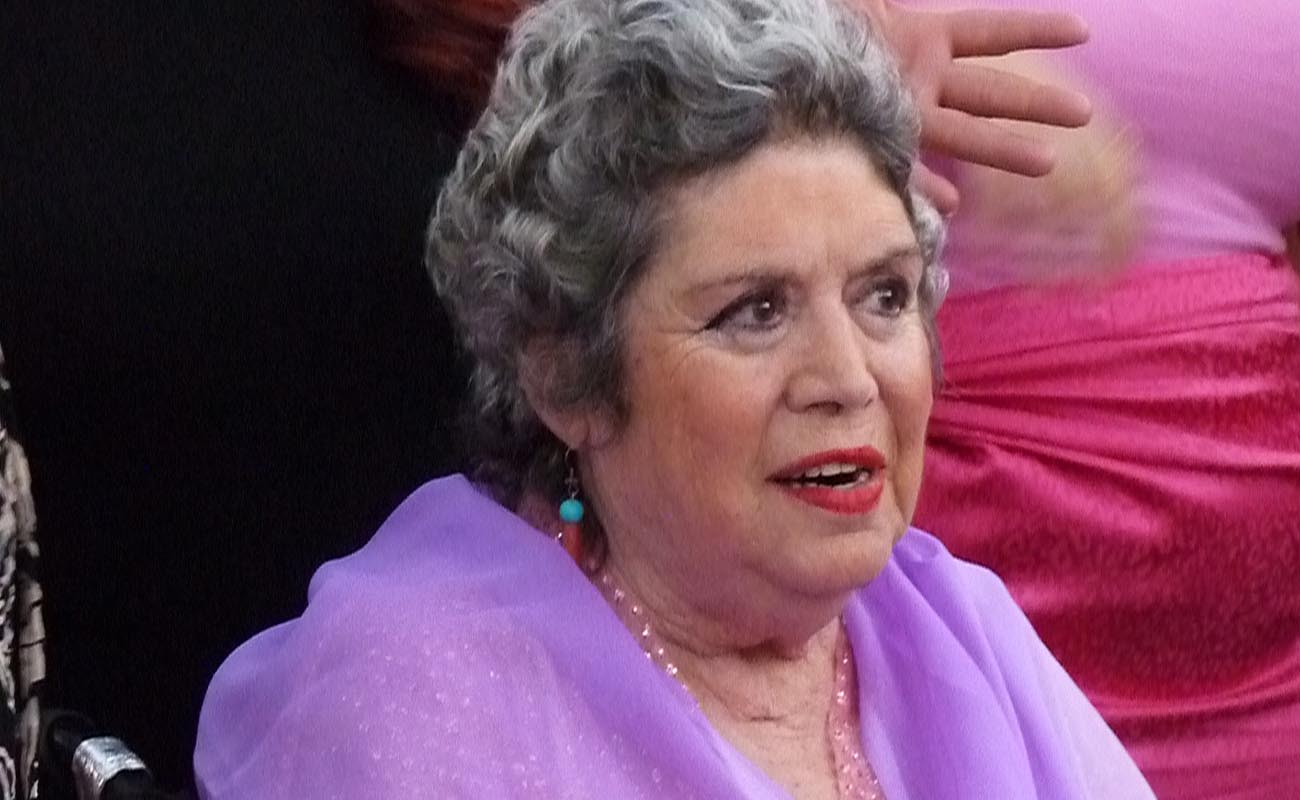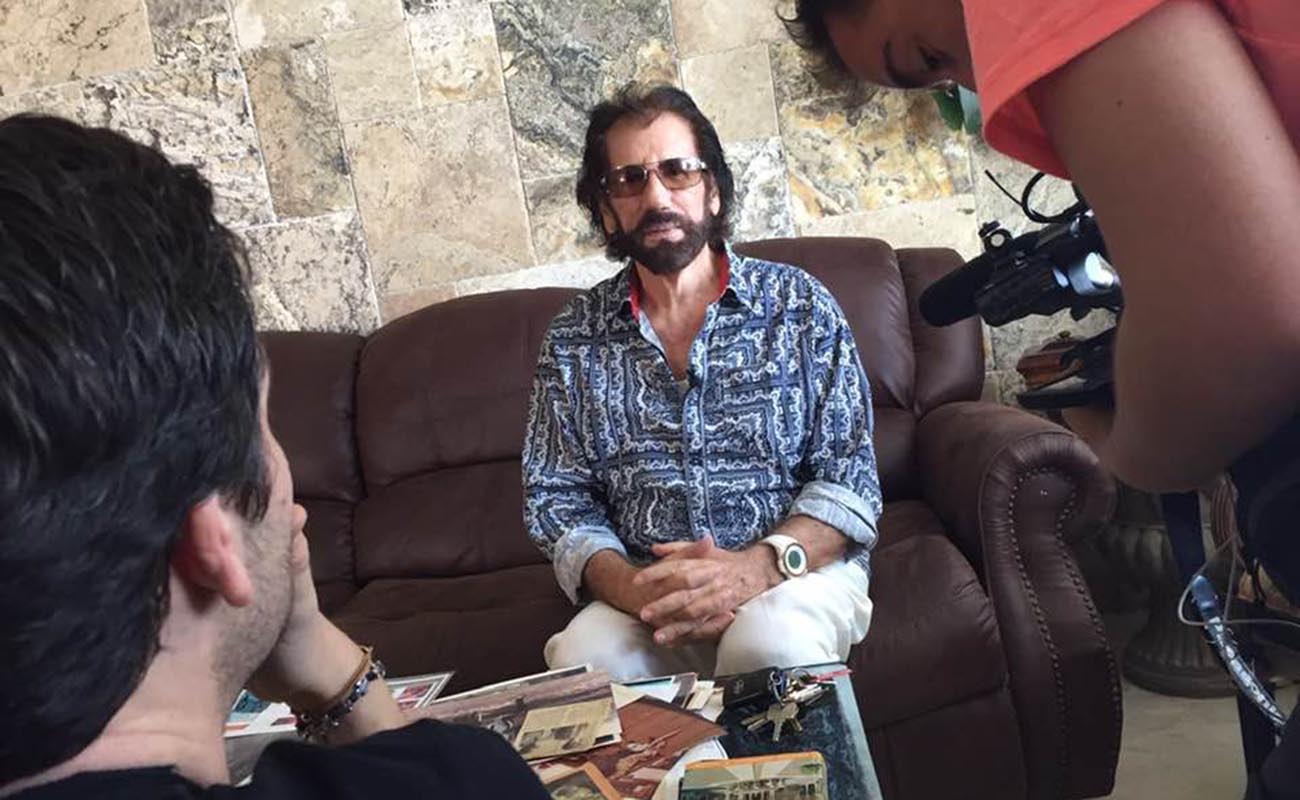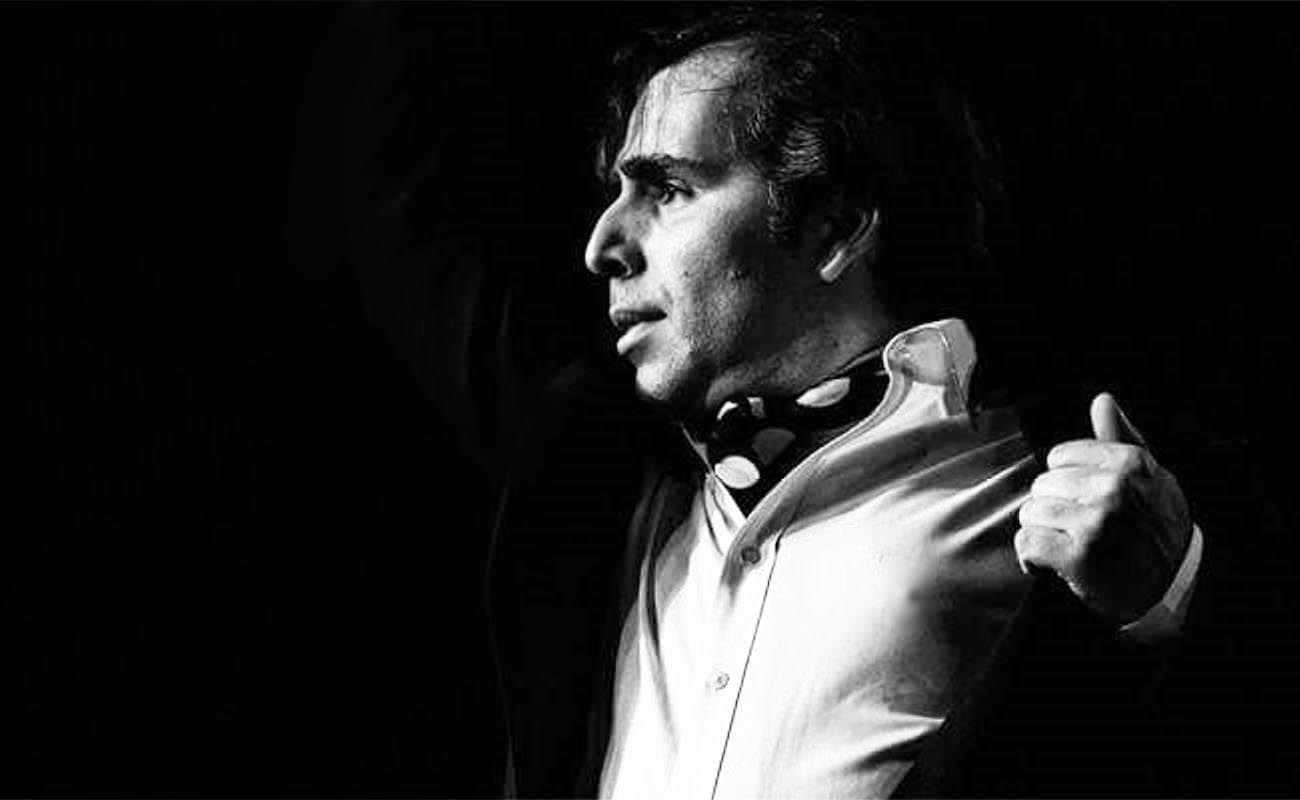Antonio Canales: «We’re in a barren, fallow age of baile flamenco»
The bailaor from Seville gave an interview to ExpoFlamenco after a tribute to his career in the ‘Tacón Flamenco de Utrera’. It was a sensible, sharp conversation about the present of baile flamenco
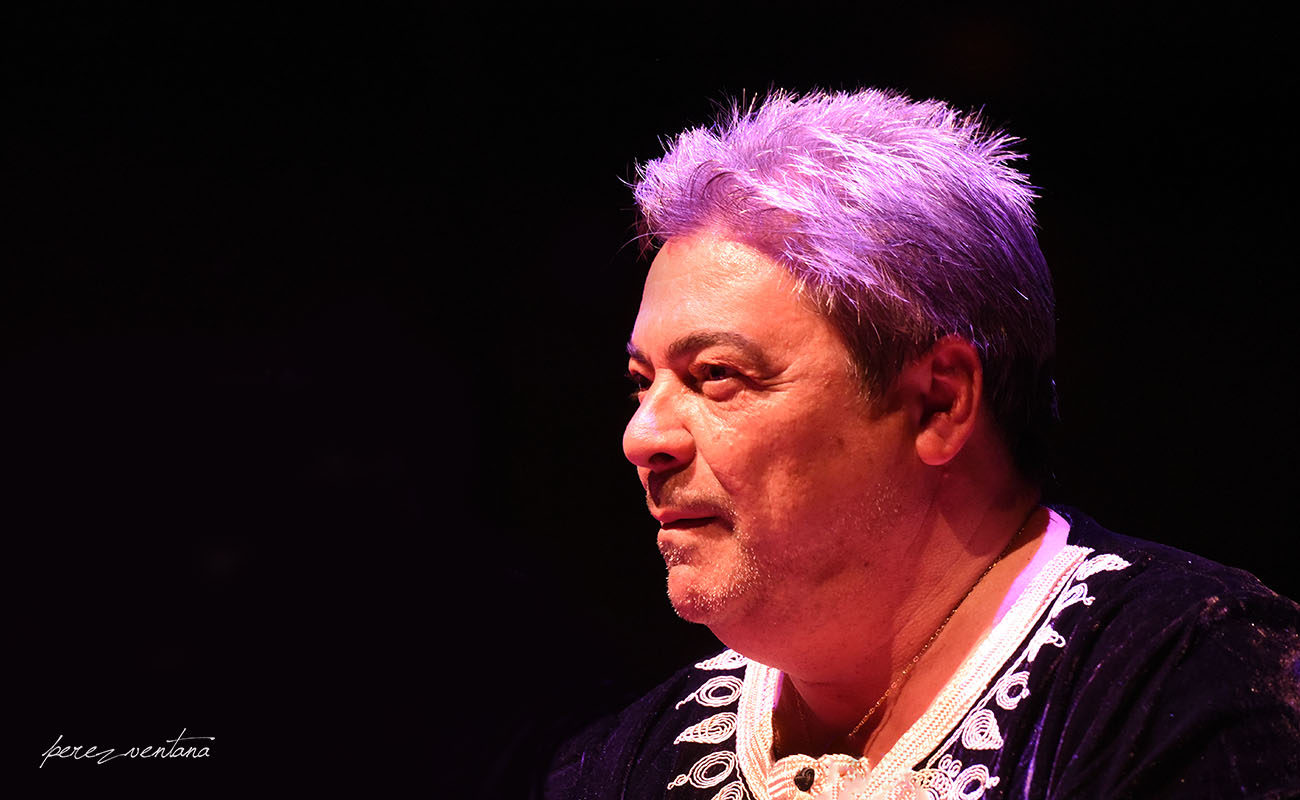
His personal, pure way of conceiving baile made him into a leading flamenco star. Ballet Nacional, National Prize of Dance, great scenic productions: Torero, Gitano, Bailaor… A whole life under the limelight. He’s one of the greatest, adored by the wider public and discussed by the critics. Among the latter is the director of this website, Manuel Bohórquez, who meet this artist as moderator of the round table honoring Antonio in latest Tacón Flamenco de Utrera. What a moving moment it was, this encounter between the artist and the flamenco critic, who used to be sworn enemies. «I used to hate him with all my heart, and now I feel proud of sitting next to him», stated the artist from Triana. It’s what happens when good people who love flamenco get together.
We enjoyed a pleasant conversation at the Teatro Enrique de la Cuadra with Antonio Gómez de los Reyes (Seville, 1961), maestro Antonio Canales. The bailaor seemed at ease being approached by a website he follows in the social networks, and unleashed his tongue in a thoughtful and measured way.
– Today, we’ve enjoyed your golden words more than your art. We can only imagine how many unforgettable moments you’ve experienced in a whole life devoted to baile flamenco. How do you feel in this moment of your career, Antonio?
– I feel I’m in my best and sweetest moment. There’s still a horizon beyond the fence. I’m working on a movie with Lolita to be released in October, and I spend a lot of time writing, which is one of my hobbies. And we’ll premier a production at the Bienal de Málaga on April 8th. It’s titled Diario de Navegante, about the bull (named Navegante) who almost killed the bullfighter José Tomás in Aguascalientes (Mexico) several years ago. It’s directed by Rubén Olmo. Then there’s this tribute in Utrera, sweet as honey, the conferences, the master classes… And in a few days, I’ll travel to Guadalajara, Mexico, to one of the most important flamenco fairs. It’s a dream come true. I’m going as director, choreographer and performer of baile. The other day I danced at the Távora theater, we paid tribute to maestro Salvador.
– You were an admirer of Salvador Távora, right?
– The last time I talked with him, accompanied by Manuel Bohórquez, he told me he wanted to direct me in a production called La mesa de camilla (“The Warming Table”). «Warming table, maestro?» I asked him. «Yes, everything happens around warming tables», he told me «People flirted under it, they got warmed up drinking, ate chestnuts, chatted, cried…». Yet, he passed away without finishing it.
– Now you’re living away from the hustle and bustle of the city.
– I feel happy living in the countryside, with my hunting dogs and the flamencos who sing their fandangos in the taverns. I only go to the city if I need to attend some event. I prefer to be by myself, enjoying nature. I’m almost 60 and it shows. I feel well-regarded by the artistic world, the intellectuals, the townspeople, my colleagues… I feel a bit disillusioned on the cultural aspect, because there are so many obstacles for everyone. Newspapers get shut down, doors get closed.
– Bohórquez says you were always a bailaor of inspiration. Is this a good or a bad thing?
– He says that about me. He’s on the right track, because I was a very visceral bailaor. I always tried to be very passionate with the cantes and the characters I portrayed. This could be a good thing, but sometimes it wasn’t. I would get started on a normal soleá and then I’d get that fiery spirit… Why so much drama? With time, I looked at myself and thought: «whoa, I’m overacting there». There was no need to go into a trance.
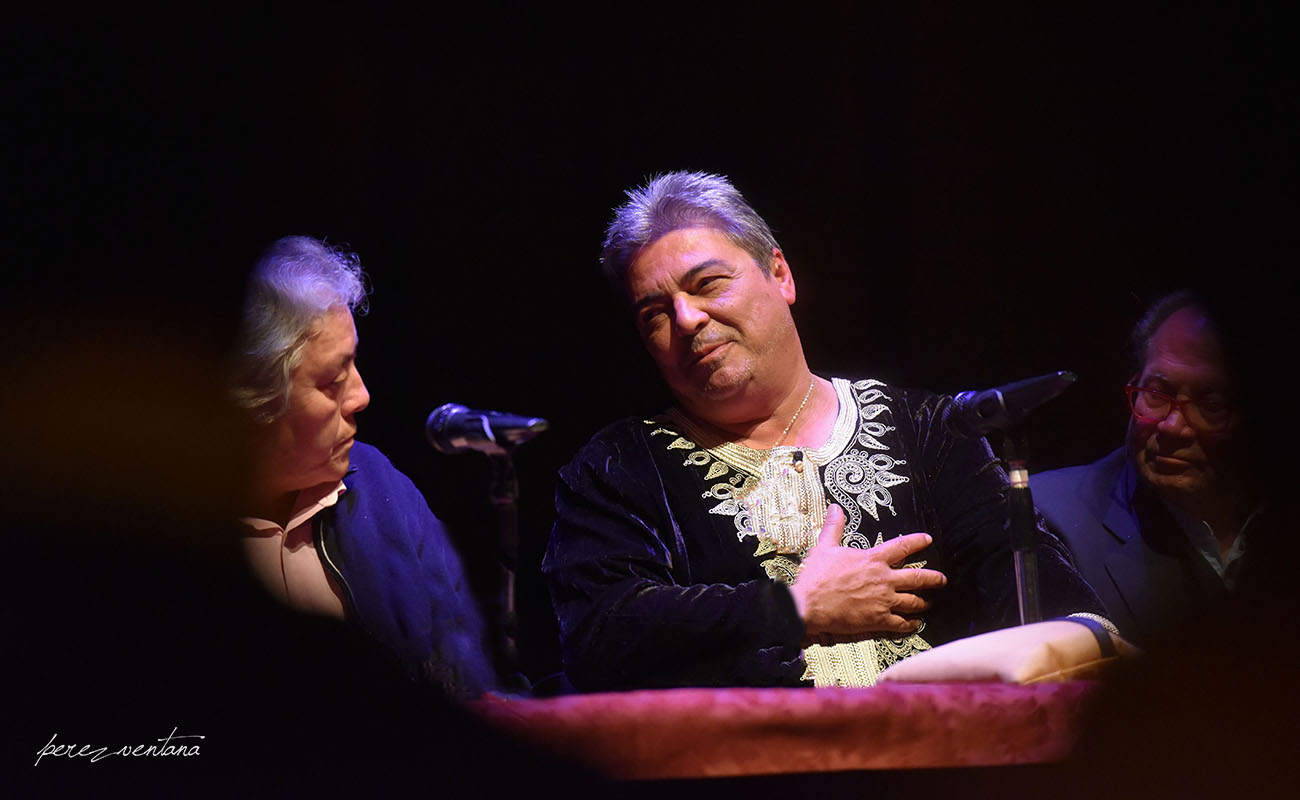
Manuel Bohórquez, Antonio Canales and Manuel Marín. Tribute to Antonio Canales. Enrique de la Cuadra Theater, Tacón Flamenco de Utrera. Photo: Quico Pérez-Ventana
– During the round table, maestro Manuel Marín stated that your technique could be learned in an academy, but not your art. Do you agree with the first part of this statement?
– Yes, that got us thinking. We’ve all gone through Marín’s training. “The footwork must be perfected? Go to Manolo Marín”. More than a performer — and he dances amazingly — he’s a builder of bailaores. “Your left foot is pretty bad. Let me see under your boot”. And he’d see a whole map on the sole. Certainly, when it comes to technique it’s possible to build a Sara Baras, a Canales, a Manuela Carrasco. But then Manuela comes out and does this or that gesture, or I come out with my own personality… That’s the magnetism that cannot be built.
– So, as we understand it, baile flamenco can be learned in an academy, but not specifically the baile of Antonio Canales.
– It can’t, that would be impossible, because it’s a visceral baile that I’ve experience since I was a child, watching my grandmother and my mother dance. Then I’ve perfected it. In an academy it’s possible to learn the dry, hard technique, but not the baile of Antonio Canales. Not even I would be able to teach it. Not even to that kid who performs Torero, Pol Vaquero. Seriously, he’s really good. He’s the one who better nails it, he has brought that production into the 21st century. I’ve been very careful and faithful with this production. What was good thirty years ago, is still good.
«We’re left without those voices and those performers who are the ones who should be giving a lot to flamenco, because it’s their turn to contribute to this art, as they were born around it. They know it, they’re not stupid»
– What’s your opinion about baile flamenco in our days? According to your words during the tribute at the Tacón Flamenco, I gather you’re not happy with where it’s going, or with the steps it’s taking.
– I don’t like the present time. We could say that nowadays there is a disfunction. More than fusion, there’s confusion. In my early days I felt an urge to do crazy things. It was the 1980s, and Spain was experiencing democracy for the first time. It was the moment for culture, for explosion, for revolution. But nowadays there is none of that. I don’t even see harmony between today’s cultural or ethical terms and what’s happening. It happened with that play by Salvador Távora, Quejío, which was the cry of the laborers, the sweat. Nowadays there are many things to cry for, to fight for. We must reconsider, because flamenco is a vehicle for that. Yet, I don’t see such commitment with the innovations, the lyrics. I see a superficial commitment: the self, the ego above everything else.
– Tell us about the bailaores of our days. You’d like some of them, right?
– There isn’t one person or one show that has broken the norms. People used to say that it was just Antonio Ruiz Soler, Antonio Gades and myself, the “Three Antonios”. The triantonian age. Is not that after me there haven’t been any good bailaores. Not at all, there are princes of baile who are dancing very well such as Juan Manuel Fernández Montoya Farruquito, and Pepe Torres, from Morón. There is a Gypsy fierceness, people who do it well, Gema Moneo… But then there are lots of artists who are just there without saying anything. They are totally confused, I think. And besides they’re cheered and acclaimed. I also had my fans who would follow me wherever I went. If I put a cake on my head, they would cheer and clap just the same. Now the same happens. Bailaores do whatever they want and their fans shout “Ole”. And the rest of us are left behind. Instead of bailaores or artists, monstrosities are coming out. For example, the work of Israel Galván, which I’ve loved my whole life. I saw him dance in the days of Mario Maya, I’ve been following my Isra. Yet, I’ve had to get up and leave from his latest productions. I couldn’t stand what he was trying to say. I totally lost interest in him. Or Rocío Molina, in a different circumstance, talking about national awards. I know her since she was a little girl, so stubborn. I took her in my company. We made the tribute to La Chana, she danced a cantiña with a bata de cola in a small circuit with Rancapino and I told her, “That’s how I like to see you dance, woman”. In her show Bosque Ardora, which is the last thing I saw of her, there was a point when I felt dizzy. I didn’t know anymore what was that I was watching. I don’t see her, I see a monstrosity. I don’t know what her intentions are, I don’t understand her. There is a lack of true innovators. We’re in a barren, fallow age of baile flamenco, of creativity. We’re too idle. And I don’t think that many of the things we’re seeing now will take roots and have continuity. All will be lost.
– What about flamenco, Antonio? The other day José Mercé was telling us that when it came to traditional, true ‘flamenco jondo’, there was not much to talk about.
– Indeed. There are El Purili, the Tomasas, El Boleco… I’ve seen them perform and I was impressed. They’re gold. We’re all counting on them, because they are the heirs of genes and tradition. The bible is in their hands. Yet, besides them, it’s a mess, nobody knows what they’re doing. The last album of Arcángel, I don’t understand the intentions of a man with such a stellar, solid career. I don’t understand why Estrella Morente is singing copla. I don’t understand Miguel Poveda emulating Luis Miguel singing ballads. I get it, you have a great voice, but you’re not Antonio Molina. They’re not giving us anything new. They and their agents want to sell out stadiums. Yet, they haven’t achieved any success in Latin America. Why? He’s not Diego Cigala, who succeeded in his own way with Chicho and Bebo. Poveda hasn’t succeeded in Miami or Latin America or any of these places, trying to sing their music. The same happens with Mayte Martin. She’s getting all sidetracked and hasn’t recorded an album as a cantaora should. It’s not that we’re stuck in the past, I don’t think so. It’s rather a matter of bringing flamenco to the present time, but with rigour and flavour and taste. Who has created any new cante? No one dares to, they don’t even think about it. It’s just the same old cantes and they just fly around in circles. There isn’t much to say about flamenco in general, that’s the reality.
– We may understand that one singer sings coplas and the other one sings ballads in order to reach a wider public, right? Perhaps there aren’t as many flamenco aficionados to sell out stadiums, apologies for being blunt.
– Yes, they’ll listen to that song La bien pagá (“The well paid”). But then we’re left without those voices and those performers who are the ones who should be giving a lot to flamenco, because it’s their turn to contribute to this art, as they were born around it. They know it, they’re not stupid. But like you said well, they pretend they are not listening and do their own thing. That’s terrible for us. It’s not good. It’s not healthy.
«When Rosalía became famous performing at Circo Price in Madrid, I went on the following day and asked her: but where are you trying to position yourself? You’re doing like Niño de Elche! And she told me: Maestro, don’t mix me up with that one, OK?»
– Are you as tired as many other flamenco aficionados regarding the big fuss about that young artist from Barcelona? There are even flamenco experts claiming she’s the new Niña de los Peines.
– Mother of God, they’re crazy. I think people get unhinged and take things out of context. I know her since she was a little girl. She wanted to come here to attend the Tacón Flamenco de Utrera the day of my tribute, where Remedios Amaya, Marina Heredia, Montse Cortés and Rafael de Utrera performed… I told her not to. She has been recording in Morón all of last week. She has called her loudest critics around here, asking them to praise her. She’s not a fool at all. The same goes for those around her. Rosalía liked flamenco, she sang what she knew, imitating Niña de los Peines and Marchena. Yet, she doesn’t have what it takes for this. Suddenly she has positioned herself with a heck of a team in the background [El Guincho and the producer Canada] and a product is created. A pop product. It’s not flamenco, what happens is that she has a flamenco twist. Because in Spain it’s in our DNA. Just like Azúcar Moreno back in the day, right?
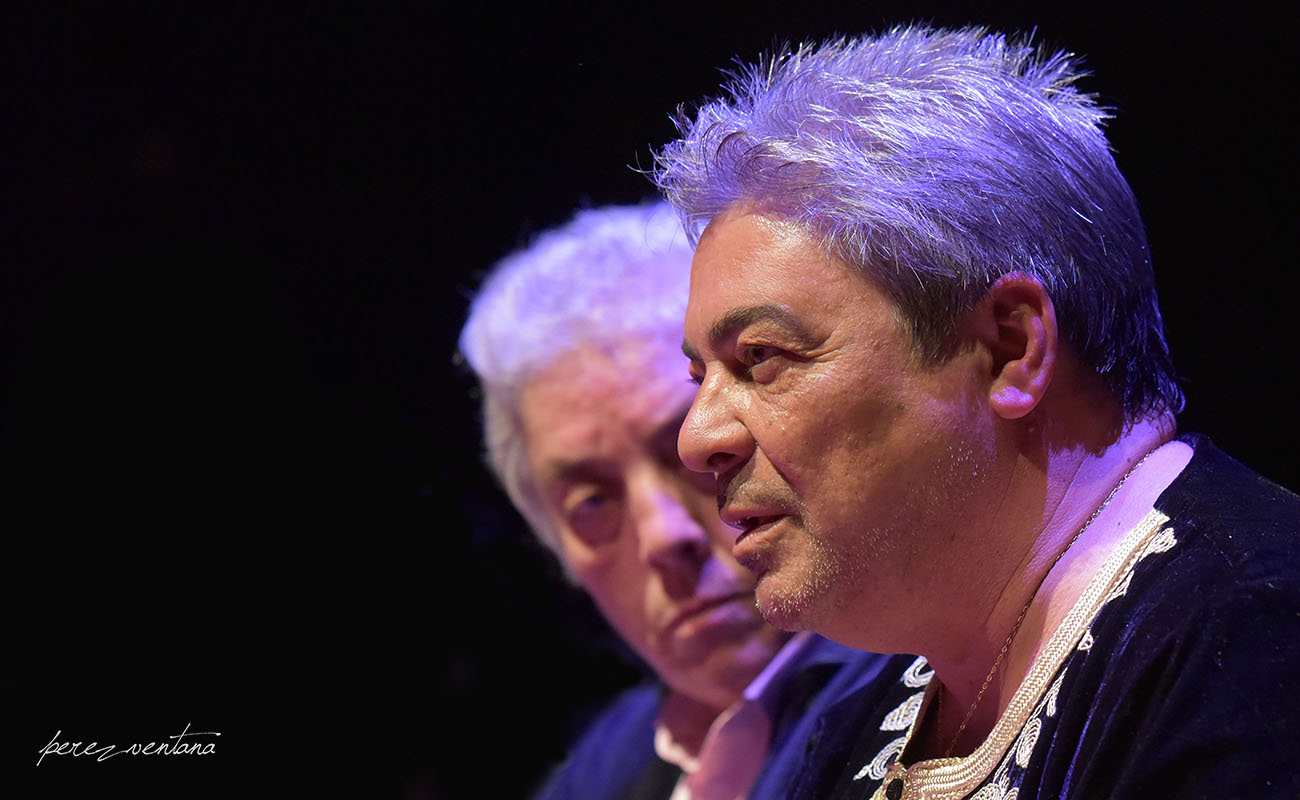
Tribute to Antonio Canales. Enrique de la Cuadra Theater, Tacón Flamenco de Utrera. Photo: Quico Pérez-Ventana
– Azúcar Moreno had a point, though.
– Sure they did. We only live once! [an allusion to a hit by Azúcar Moreno, “Solo se vive una vez”] They had that Gypsy, Castilian thing, and much more art than this other girl. But she came in, all set to enter society. Ours, and America’s. I have also performed at the Goya Awards. The other day I played the video, it was a revolution. Yet, she came out at the Goyas in the precise moment, with that choir. Whose version was that? It was by the cousins of Azúcar Moreno. The intention was obvious. Singing a song of Los Chunguitos, no less. [Azúcar Moreno are sisters of Los Chunguitos, whose song was performed by Rosalía at the Goya Awards ceremony]. When she became famous performing at Circo Price in Madrid, I went on the following day and asked her: “But where are you trying to position yourself? You’re doing like Niño de Elche!” And she told me: “Maestro, don’t mix me up with that one, OK?” And just look at where are things going now. That wasn’t the Rosalía of the Malamente video yet.
– Careful, you may upset some artist by saying those things, maestro.
– No, Rosalía won’t get upset. She’s an artist who is going in another direction. She’s above all this fuss. Of course, she’s Spanish, and that’s the Spanish way. Any Spanish kid, even if they sing rock and have spiked hair, loves paella and ham, lust like people from Finland love salmon. It’s in the genes. And even if they haven’t ever heard Marchena sing, when the do they feel that it’s theirs, that it belongs to them. She knew how to arrive at the precise moment, and she’s entitled to believe in herself. But I don’t think that she intends to be flamenca or that she believes she’s the new Niña de los Peines or anything like that. And all those flamencos who praise her saying those things are absolutely wrong. Because, first, Rosalía caters to a different audience. She already has millions of fans around the world and people who’s taking her in another direction. For now, she’ll star in the new movie by Pedro Almodóvar.
– At the Alameda theater, people asked her to sing Malamente and she said «No, not at the Bienal». At least that sounded respectful. Unlike that other artist.
– She’s not like him, she’s different. She’s very much into the feminist movement, the moment of women per se. Note that all her choreographies are created by women. She uses the men, like she used the Nazarene on the skateboard or the bullfighter on the motorcycle. She’s the one doing the bullfighting though. She’s the boss. She’s in charge. She leans on other values, other innocence. That other dimwit from Elche is an incoherent irresponsible. I don’t know who told him he can sing, because he can’t sing anything. It’s not that Rosalía is a great singer, but at least she has a pleasant voice sometimes, but that other guy is always unpleasant.
– What could we do so flamenco gets more respect?
– Well, we could start by taking the masters seriously. Those great artists who are no longer young but are still active and have a clear mind. And I mean this in every area: journalism, teaching, everything. Because those of us are the ones who can explain and say things about what we’ve experienced. It’s very important that the universities get to know the writers, researchers, flamencologists. That they approach flamenco and get to know it better. Then a national flamenco center would have to be created. Not a national dance company, but something along the lines of the Cristina Heeren center, but that’s is not a national center, just a foundation. Flamenco is our heritage. There have been some attempts, one in Jerez, but they’ve always failed. There’s a need for a great center of documentation, information, events, teaching. A place where we could all get together and discuss ideas. Artists also need to be able to lead a dignified life in old age. Senior artists who don’t earn enough and can’t dance at 67 years of age because that would be ridiculous. How can anyone live with a pension of 420 euros? Summarizing, we need that big house of flamenco with opportunities for teaching and research, a government-funded place where people can get updated.
«I have to get used to these tributes. My colleagues tell me: thank you, but slow down, or you’ll have a heart attack»
– Let’s look back, at your contribution to baile flamenco. What do you feel most proud of?
– I feel proud — and I don’t regret anything, even my failures — that baile is what I have always liked, since I was a kid. And when I became a professional bailaor, I invested in choreographies whenever I could. My wife asked me when we were going to spend our savings for ourselves. «You spend it all in your choreographies, your baile, your dreams». Like a kid who built a castle or a scalextric racing set, I’d buy a choreography which would cost thousands of dollars and then pay for it for five years. I think all of that becomes a style, we could call it canalista. A way to see life with its consequences through baile, through investment, through entrepreneurship. Now it’s much harder. Now, if the Comunidad de Madrid wants to pay for a re-run of Torero, well that’s great. I’d put my effort, but they’ll have to pay for it. Because having to come up with thousands and thousands of euros is very difficult nowadays, considering how things are. I’m proud of having spent a lot and ending up in debt with my choreographies. This way I can show others what can be done, and that we must fight for what we believe in.
– It’s a good thing being honored with a tribute show, being so young. That’s unusual in flamenco, isn’t it?
– Yes, it’s unusual. Last year, when I was 56, I was honored in Madrid on occasion of the 25th anniversary of Torero. It fell on my birthday, December 3rd. All artists were there: Nacho Duato, Víctor Ullate, Matilde Coral, Joaquín Cortés… I thought I was dying. They sang happy birthday and I watched my production without me on stage. I got the chills, I sweated more that if I were dancing. But then I though: well, I have to get used to this. We artists always say that we want tributes like today’s before we get old. When I’m alone later tonight, I’ll be thinking about the words that each person told me today… Manuel Bohórquez, whom I love, because I’ve been trying to make him like my art for 20 years. Having him here by my side, someone whom I follow, read and reread. I agree with him in some things, disagree in others. We laugh, we wish death to each other. There is love and truth in what we do. I’m living a dream. And better enjoying it now, not when I’m dying. Like happened with the foundation that Gades set up and got started when he was no longer with us. I prefer having my foundation and seeing it all, up and running. Like Oscar Wilde, who would come out and greet the visitors. Then I’ll go to La Puebla now and then and have a rice dish, laugh and have fun. Bohórquez told me today: the day you announce your retirement, the myth will explode. My mother also told me: what’s with that tribute, are you retiring? No, I don’t think so. I also want to enjoy these moments. This in Utrera, that congress in La Isla… My colleagues tell me: thank you, but slow down, or you’ll have a heart attack.
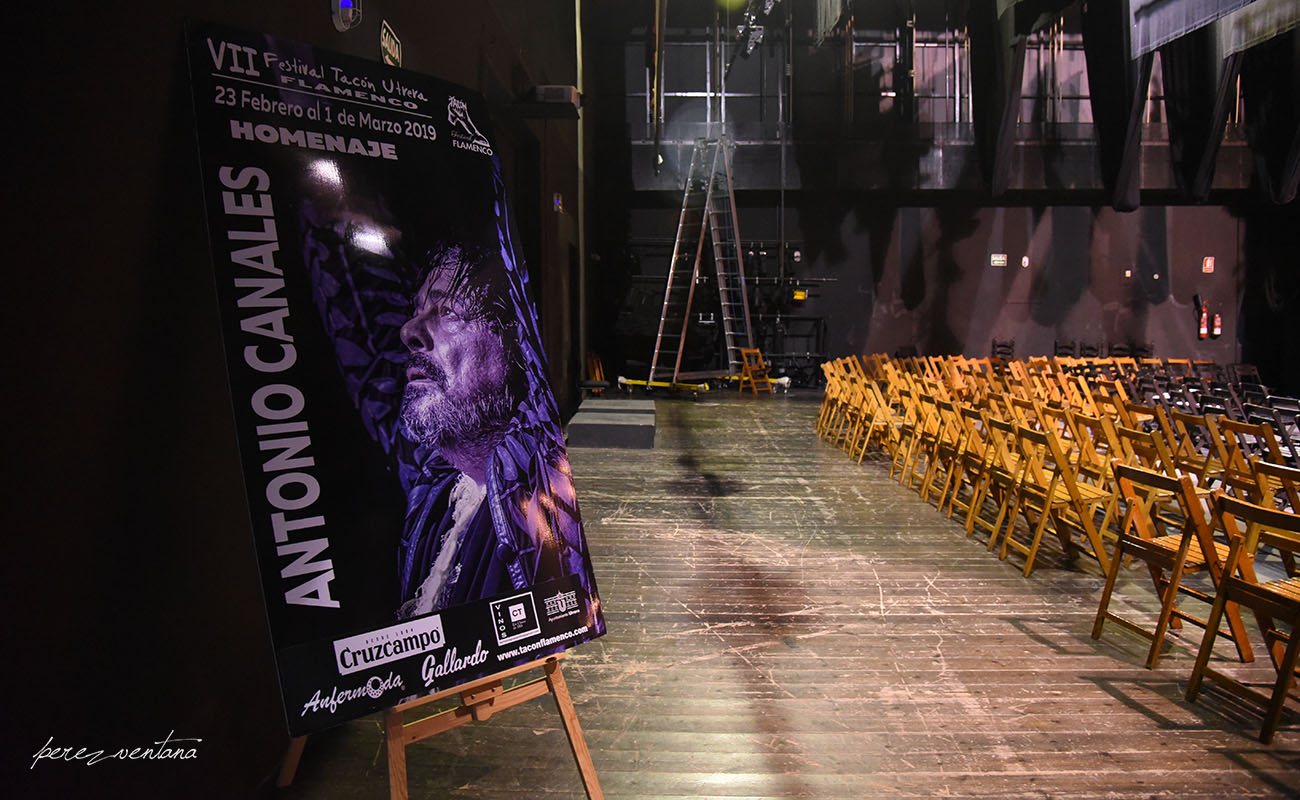
Backstage of the Enrique de la Cuadra Theater in Utrera. One hour before the round table honoring Antonio Canales. Tacón Flamenco de Utrera, Feb, 26th, 2019. Photo: Quico Pérez-Ventana




